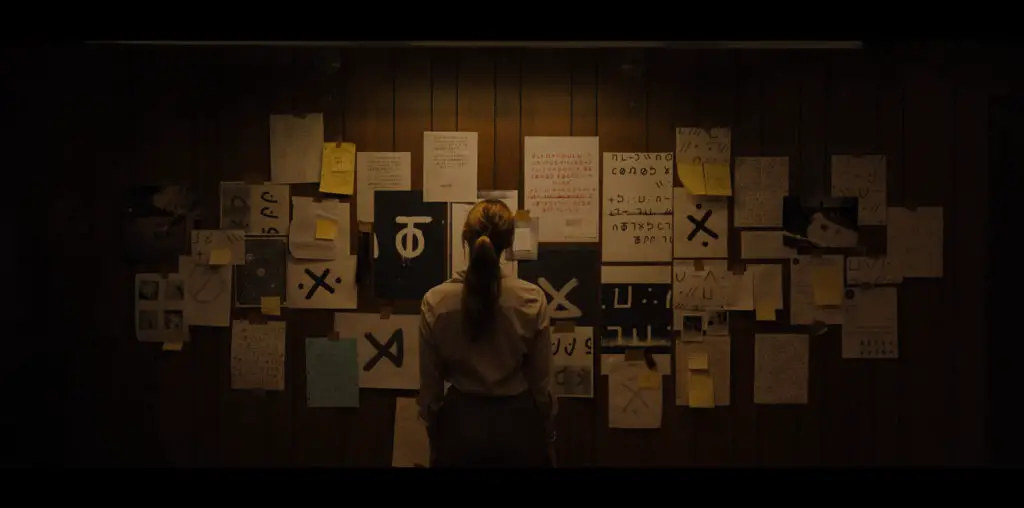
The first shock in writer/director JT Mollner’s impressive Strange Darling is at the very beginning when the Miramax production logo appears. I thought that company was dead? Then a title card says the movie was shot “entirely on 35mm film” which is something I have never seen claimed before a feature film. Was this a ploy to sublimate the idea that this was made years ago before Weinstein’s predilections imploded Miramax? Probably not. Mollner is on record as an eternal devotee of celluloid.
Strangely, not only is this cinematography some of the most luscious I have ever seen, but it turns out the director of photography is the very fine actor Giovanni Ribisi, here making his debut in that role.

“…a seedy motel room. In it, The Demon and The Lady entertain their jaded souls…”
From the outset, the thriller toys with the elements of its own construction. An opening crawl suggests we are about to watch the dramatization of a true story. But it does this with the same sly language the Coen brothers used before their entirely fictional Fargo, instantly inviting us to doubt what we are about to see. The film describes itself as a “thriller in six chapters,” and then opens on a gorgeously realized chase scene that the intertitle (there are a lot of intertitles) says is part three.
Strange Darling then bats time around like a ball, leaping back and forth through its scrambled story. The extent to which the cut-up technique marshals things into place is profound. From the outset, we are led to assume a particular narrative, but then that gets melted like a corpse in an acid bath as the story progresses.
At its heart, this seems to have a great deal to say about hook-up culture. We open on the bloodshed and terror of a chase, but then we return repeatedly to the source of all this mess: a dangerous and kinky date in a seedy motel room. In it, The Demon (Kyle Gallner) and The Lady (Willa Fitzgerald) entertain their jaded souls with some extreme sex.

"…a visually hypnotic thriller."


